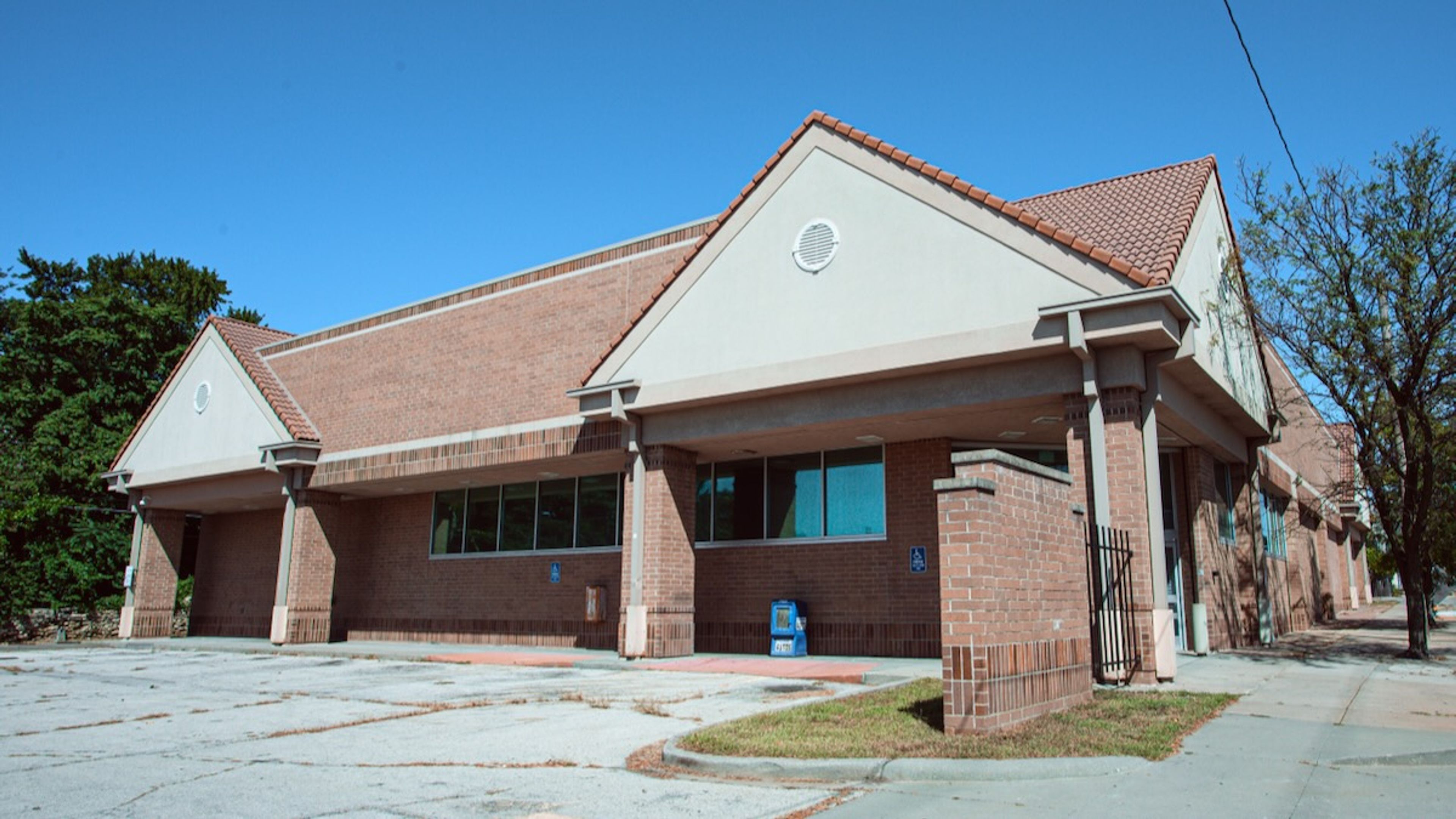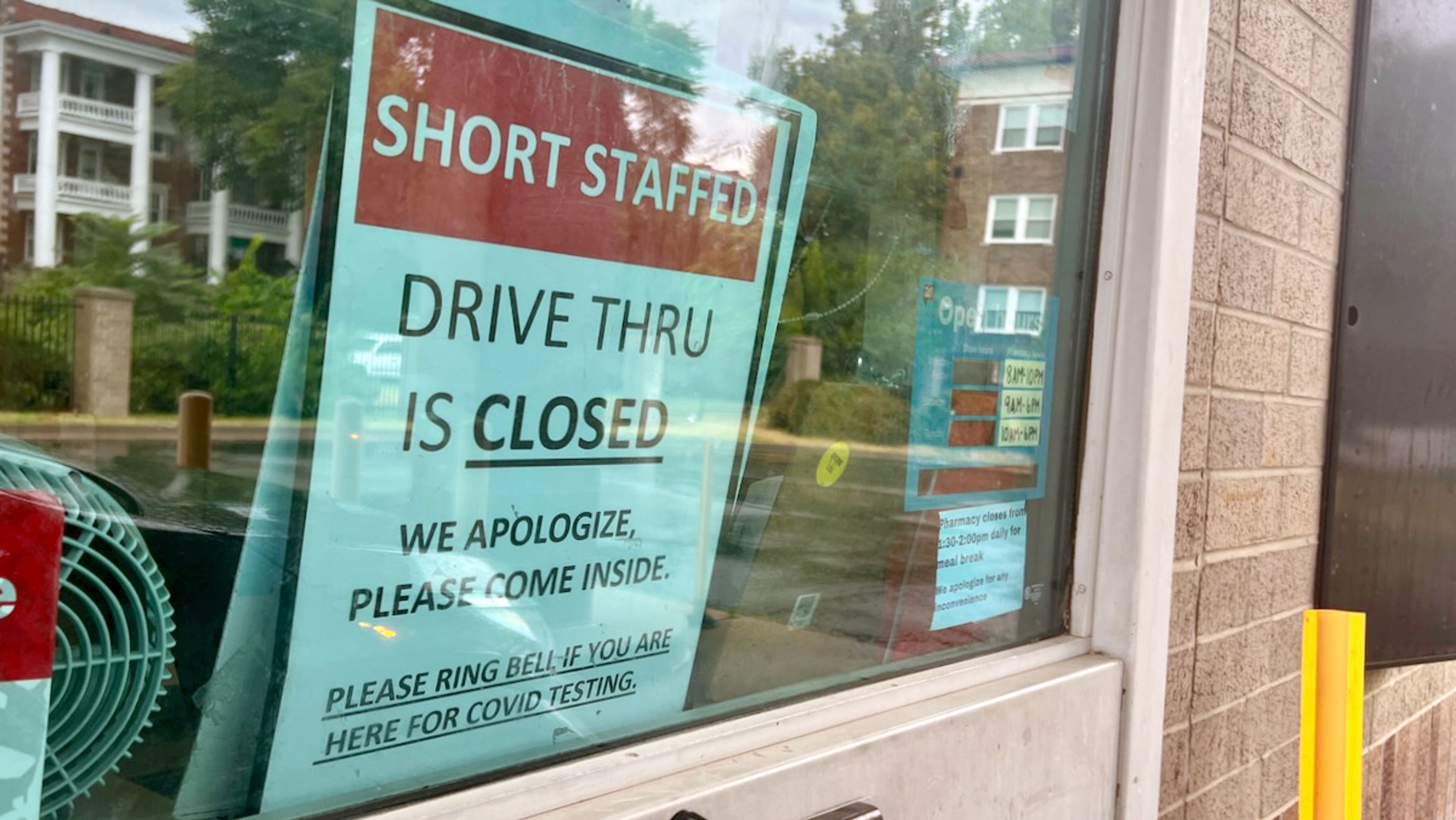Missouri, Kansas keep losing pharmacies — key part of health care
Missouri, Kansas losing pharmacies at an alarming rate; communities vulnerable without essential health care services
This story was originally published by The Beacon, an online news outlet focused on local, in-depth journalism in the public interest.
Less than two years ago, neighbors near Brush Creek Boulevard and Troost Avenue had choices when they needed to pick up a prescription — or a carton of milk.
A CVS pharmacy stood on the northeast corner of their intersection. Its retail rival, Walgreens, was just a block south at Troost and Emanuel Cleaver II Boulevard.
But today, a beauty supply store sits in the old CVS space. The pharmacy closed in April 2023. And the Walgreens, which had moved out five months before, remains empty. Weeds sprout through cracks in the parking lot and graffiti marks the drive-thru window.
Now people in this part of Kansas City, home to some of its poorest neighborhoods, may have to catch a bus just to fill a prescription. Even if the buses run on time and it only takes 10 minutes at the drugstore, the round trip to the nearest CVS or Walgreens would take nearly two hours.
“When you don’t have something close to where you live,” said Alana Henry, the former executive director of the Ivanhoe Neighborhood Council, “it makes life more complicated.”
Retail pharmacies are shutting down in places such as Kansas City and Wichita across the country, posing a growing worry for health experts. It’s most acute where the incomes are lower, in urban cores and small towns where pharmacies act as convenience stores of the health care system.
“When those community pharmacies close,” said Lucas Berenbrok, an associate professor at the University of Pittsburgh School of Pharmacy who has been mapping closures, “communities lose critical access.”
Why losing pharmacies matters
Kansas City has lost close to 100 pharmacies in the last 10 years. CVS closed at least 11 stores, including one on Independence Avenue this summer. Walgreens shut down five, and another on East 63rd Street was expected to close at the end of September.
Nationally, Berenbrok’s mapping shows about 7,000 pharmacies shuttered since 2019. His analysis doesn’t yet include what’s believed to be a far smaller number of stores that have opened.
“It matters that someone lost access to care,” Berenbrok said.
The closings come at a time when, an Associated Press analysis found in June, people in majority Black or Latino neighborhoods and rural residents already have the fewest pharmacies per capita. Pharmacies also tend to represent a critical source of health care — sometimes the only one.
Some chain stores even operate urgent-care clinics, where patients can get tested for strep throat or prescribed an antibiotic.
When Walgreens and CVS pulled out of their Troost locations, residents said goodbye to two important anchors in their community, said Bill Drummond, a glass artist who lives in the nearby Manheim neighborhood.
“Community health is what it was,” he said.
Yes, the prescriptions. But also a place to check your blood pressure, get a flu shot or other vaccination, get COVID tests. Most importantly, somebody there could answer medical questions.
Russell B. Melchert, dean of the University of Missouri-Kansas City School of Pharmacy, said pharmacists have always filled that role. When COVID hit, that became even more clear.
Pharmacies picked up some of the work that overcrowded hospitals or temporarily shuttered doctor’s offices would normally handle. And as the shortage of primary care providers increases wait times for appointments, the need for pharmacists keeps expanding.
“We have a gap in primary care services,” Melchert said. “And that’s for people who have health insurance. What about the many hundreds of thousands who don’t? They have nothing.”
Why are pharmacies closing?
To understand why pharmacies are closing, it’s helpful to understand the terrain that has shaped them: Steep climbs in the number of prescription drugs available and deep canyons in the profits those drugs bring in.
Until the 1960s, pharmacies sold medicine directly to consumers. A patient left the doctor’s office with a prescription, took it to the neighborhood drugstore and paid whatever the pharmacy charged.
Then came prescription insurance coverage, which started small 60 years ago and quickly expanded. It reached near ubiquity in 2006 when Medicare added drug coverage. The industry helped open a flood of new drugs — and gradually determined what drugs you could get and how much a pharmacy would get from sales.
In 1950, every American took an estimated 2.4 prescription drugs each year. By 2015, that shot up to 17.3, according to a textbook written by Lawton Robert Burns, a management professor at the University of Pennsylvania.
Today, just under 10% of U.S. health care spending goes to drugs. That’s out of the $4.5 trillion on all health care, or $13,493 per person. In 1970, per capita health care spending was only $353, or around $2,000 in 2022 dollars.
The money to be made on prescription drugs drew chain pharmacies such as CVS and Walgreens to buy out family-owned drugstores and build new stores — often within blocks of one another.
But the chains’ building boom in the 1990s and early 2000s has been followed by retreat in the last decade. (It doesn’t help that the chains are also absorbing multi-billion dollar settlements of lawsuits over their roles in the opioid crisis. In 2022, CVS agreed to pay $5 billion, while Walgreens agreed to pay $5.7 billion.)
For reasons that involve the complicated way insurance companies reimburse pharmacies for drugs, profits from prescriptions began to fall. In many cases, they plummeted so much that pharmacists couldn’t cover their costs.
On top of that, buying habits changed. People started getting medicine through the mail and buying shampoo, toothpaste and other front-of-the-store products online.
That’s why the drugstore on your block may have closed or could be next.
The story is especially dire for small independent stores. The National Community Pharmacists Association estimates that one independent pharmacy closed every day of 2023, and the organization expects a similar trend this year.
Even chain stores feel the pinch.
CVS has closed 850 stores since 2022. It expects to close 50 more this year. Walgreens has closed 2,000 stores over the last decade. Now it’s deciding whether to shutter an additional 2,150 that the company calls “underperforming”. That’s one in four of its remaining retail locations.
Executives with Walgreens Boots Alliance Inc., Walgreens’ owner, told analysts in a June stock earnings call that they would only stick with stores that are making money. The rest have to go.
Losing access to care
Tessa Schnelle, a pharmacist who has studied pharmacy deserts in rural Kansas, worries people underestimate the punch coming to the health care system.
Her research found that 210 Kansas towns are in a rural pharmacy desert, which she defines as having residents who live 10 miles or more from a pharmacy. On average, people within those deserts live about 13 miles from a pharmacy. But she expects that to continue to get worse as more pharmacies are forced to close.
Schnelle, past president of the Kansas Pharmacists Association, often hears people dismiss concerns about pharmacies being far away. After all, people can get drugs through the mail. Or, as is happening in limited capacity, from a pre-stocked vending machine.
But those solutions easily fall apart without much scrutiny, she said.
“What if I have an ear infection?” she said. “And they’re going to prescribe an antimicrobial? There is no place for me to get that, and it’s going to take multiple days for me to get that from the mail order. … And there’s no one to educate me if I’m getting it from a (vending machine).”
The same goes for home delivery pharmacies, which are becoming more common, Schnelle said. Even if those services can get the medication to patients, having the drugs without the pharmacist has drawbacks.
Pharmacists play a much bigger role than just counting pills and putting them in bottles, she said. They’re looking for dangerous drug interactions and allergies. Or they’re listening to a patient’s symptoms and realizing that they might be having a reaction to a medicine.
“Pharmacists are the brakes,” she said. “They’re there for a reason.”
Missouri has two counties — Knox and Schuyler, in the state’s northeast — without any pharmacy. And 16 counties in the state have only one.
James Johnston added another county to the list with zero when he closed down Knox County Pharmacy in 2022. He’d opened it a decade earlier when he was already running Johnston Drug in Clarence.
The 38 miles between the two stores simply became too much.
“I just about wore all my people out,” he said. “You don’t get away very often and very seldom do you leave on time.”
He said the Knox County store “had a nice business.” But selling a pharmacy in the current market, when drug reimbursement rates are so low, is difficult. And selling a pharmacy in a remote town is even harder.
“No one would bite,” he said. “You are never off duty when you’re the one-man band.”
Johnston sold his patient files to a grocery store pharmacy in Kirksville, 31 miles away. But he knows that wasn’t ideal for his customers.
A hard profession to sell
Meanwhile, across the board, pharmacies are having a harder time finding pharmacists — particularly in rural areas.
“It’s a crisis,” Melchert said. “But let me tell you how bad it’s going to get.”
In 2023, the country had 14,000 pharmacy graduates.
“Within four years,” he said, “that number is going to be about 8,000.”
That is well below the 13,500 new pharmacists the U.S. Bureau of Labor Statistics estimates will be needed annually to make up for those retiring or leaving the profession.
The UMKC Pharmacy School, which is at less than 70% capacity, is typical. Pharmacy schools across the country are seeing declining enrollment, even though pharmacists can make six figures straight out of school. Scholarships and student loan forgiveness can also get thrown in. Some chains pay signing bonuses.
Enrollment was falling off before the pandemic. COVID made things worse. Melchert suspects some would-be students may not see the profession in a very positive light after a trip to a crowded chain store, where frazzled pharmacists may juggle telephone calls, administer vaccines and scroll through computer files.
“People just don’t know what it is we do,” Melchert said.
He and other pharmacy school deans argue that people don’t know just how big a role pharmacists play in modern health care. They are doing all they can to draw more people into the profession. That includes consulting with large corporate owners such as CVS and Walgreens about how to improve working conditions, and training high school students to take jobs as pharmacy technicians.
Nate Rockers, who owns Rockers Pharmacy in Paola, Kansas, said he wouldn’t dream of asking either of his two sons to join him and take over the family store.
“I can’t envision being in business for 20 more years and retiring as a pharmacy owner,” he said. “I don’t know if pharmacy will be around as we know it in five years if we don’t do something. Once the ship sinks, it doesn’t come back up.”
Connect with the Southeast Missourian Newsroom:
For corrections to this story or other insights for the editor, click here. To submit a letter to the editor, click here. To learn about the Southeast Missourian’s AI Policy, click here.











